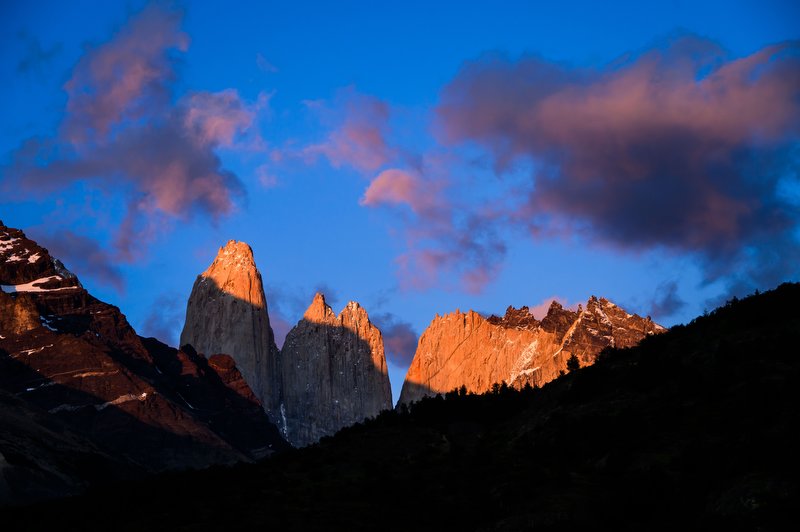In December I added a new country to the list of favorite places where I’ve led photo trips – Chile. From the highest, driest desert on Earth to the breathtaking mountains of the Patagonia region, Chile offers an incredible variety of opportunities for photographers. Oh, and there’s wildlife too!
Stretching along the west coast of South America, Chile is over 2,600 miles long, but only 217 miles at its widest, with the Pacific Ocean to the west and the Andes mountains to the east. In the far north is the Atacama Desert, which isn’t just desert but also mountains, salt lagoons and geysers, harboring wildlife such as vicuna (cousins of llamas) and flamingos. At Chile’s southern tip is the town of Punta Arenas, where we flew to access the iconic Torres del Paine National Park, a highlight of the Patagonia region. Our trip would cover all of that. But first you need to get to Chile.
The easiest airport to fly into is at Santiago, the capital. Overnight flights from the U.S. land in the morning, which gave us the opportunity to take a city tour. In addition to showing us parts of this bustling city of 6 million people, the tour was a good way to get some sun and exercise after the long flight down. And because it’s south of the equator, the seasons are reversed. December is the start of summer, so those of us coming from cold northern locations enjoyed the warm weather!
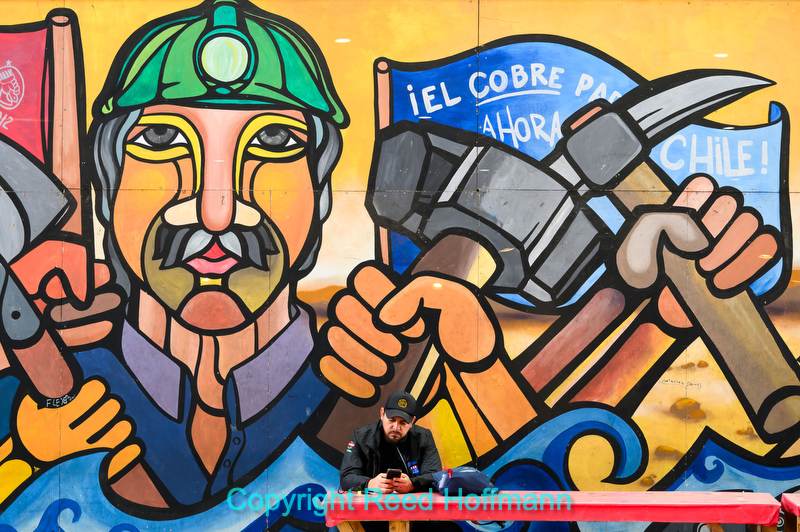
We visited some historic sites and impressive old architecture, but my favorite part of a city tour is usually the people. Nikon Z 8, Aperture Priority, Natural Auto white balance, ISO 1600, 1/60 at f/8 in Matrix metering, 0.0 EV, Nikkor Z 28-400mm f/4-8 VR lens at 130mm.
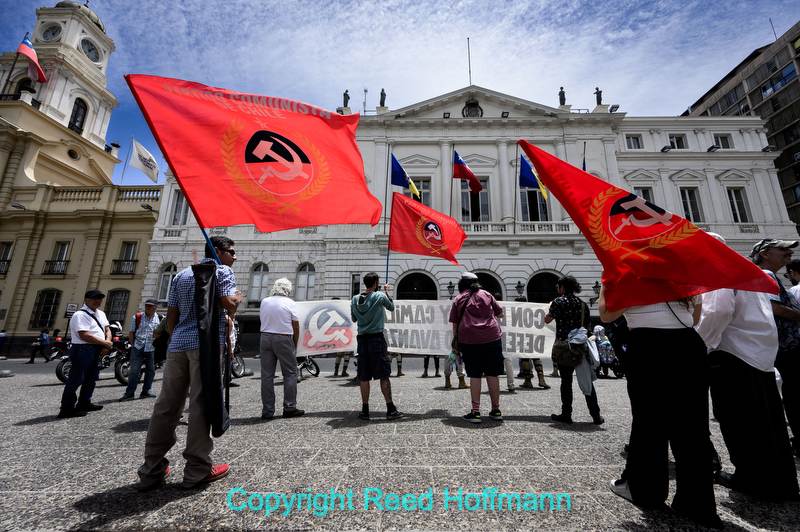
Wherever there are government buildings in a capitol, you’re likely to find a protest. Nikon Z 8, Aperture Priority, Natural Auto white balance, ISO 160, 1/500 at f/8 in Matrix metering, -0.3 EV, Nikkor Z 14-30mm f/4 S lens at 14mm.
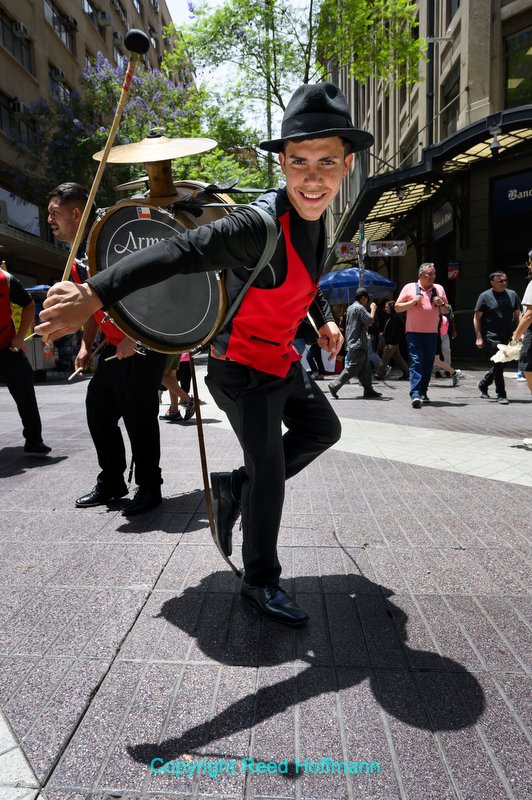
Hearing drumming in the distance, I headed towards the sound and found a group of street musicians. If you want to photograph people like this, then dropping a couple of bucks in the hat they’d laid out makes it a lot easier. Nikon Z 8, Aperture Priority, Natural Auto white balance, ISO 250, 1/500 at f/8 in Matrix metering, -0.3 EV, Nikkor Z 14-30mm f/4 S lens at 21mm.
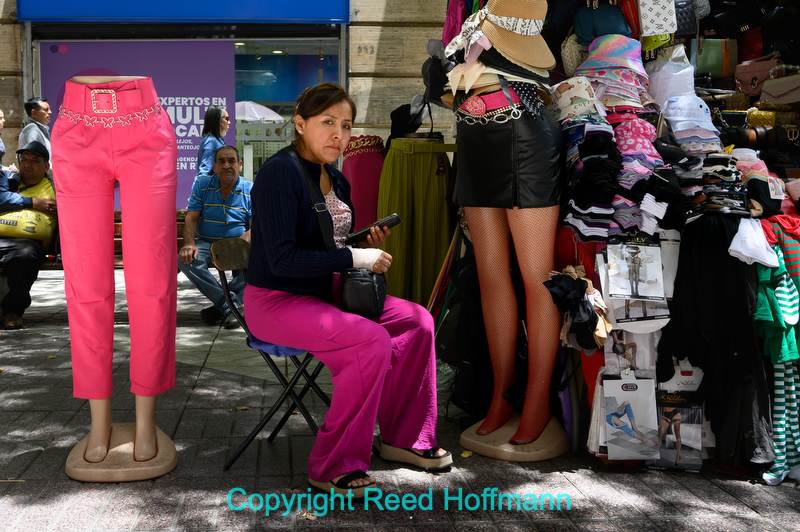
As I was walking through the street market I noticed the woman and mannequins and stopped to shoot a picture. She looked up, I smiled and waved to her, she nodded back and I walked on. Nikon Z 8, Aperture Priority, Natural Auto white balance, ISO 250, 1/160 at f/8 in Matrix metering, -0.3 EV, Nikkor Z 14-30mm f/4 S lens at 30mm.
Since we’d be visiting both the northern and southern parts of the country, the next morning we returned to the airport for the first of our four in-country flights. Our two guides picked us up on arrival at Calama for the drive to San Pedro de Atacama, a good base for people visiting the desert. That afternoon was the first of five days we spent exploring the area.
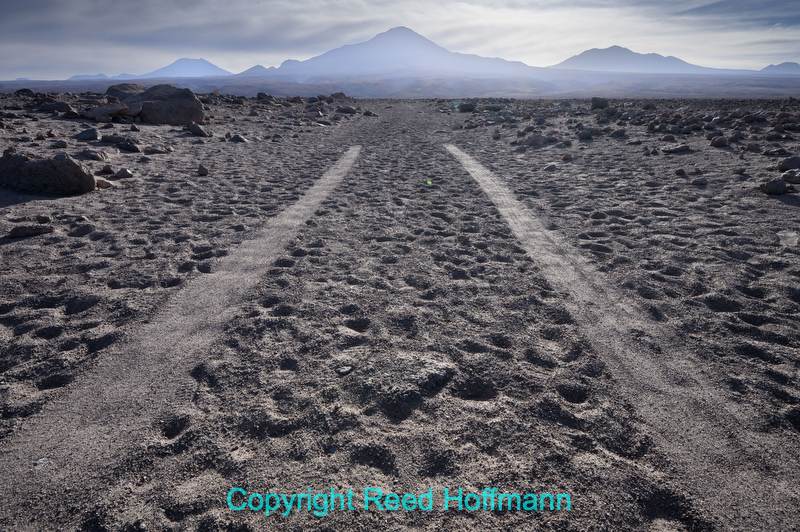
Yup, it’s a desert! Nikon Z 8, Aperture Priority, Sunny white balance, ISO 100, 1/200 at f/16 in Matrix metering, -2.0 EV, Nikkor Z 14-30mm f/4 S lens at 20mm.
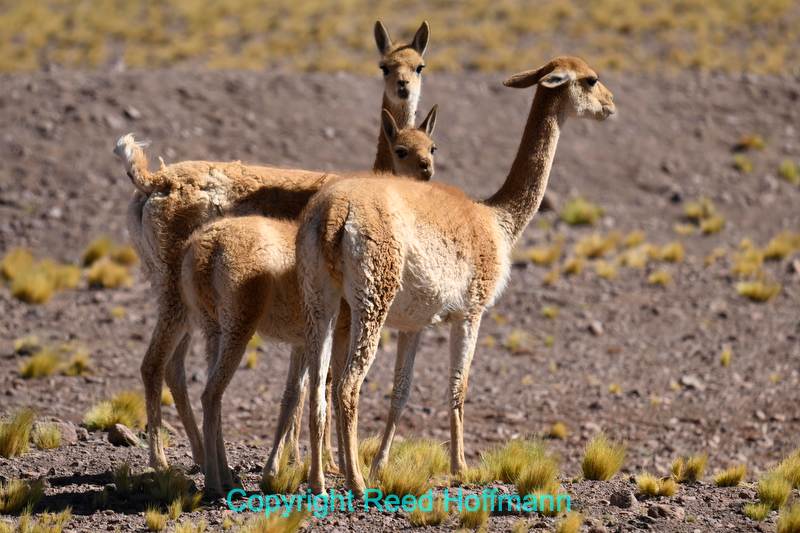
Vicuna, a close relative to alpacas (and llamas are also in the family tree), only live at high elevations. While we also saw a herd of llamas down lower, the vicunas were all above 10,000 feet. Nikon Z 8, Aperture Priority, Sunny white balance, ISO 200, 1/1000 at f/6.3 in Matrix metering, 0.0 EV, Nikkor Z 180-600mm f/5.6-6.3 VR lens at 490mm.
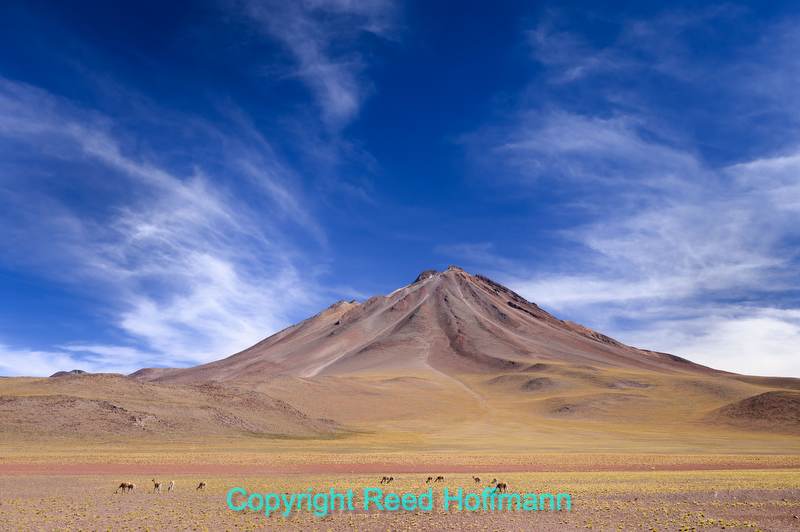
A herd of vicunas gathered beneath one of the many volcanoes in the Atacama Desert. Nikon Z 8, Aperture Priority, Sunny white balance, ISO 200, 1/80 at f/8 in Matrix metering, +0.3 EV, Nikkor Z 28-400mm f/4-8 VR lens at 32mm.
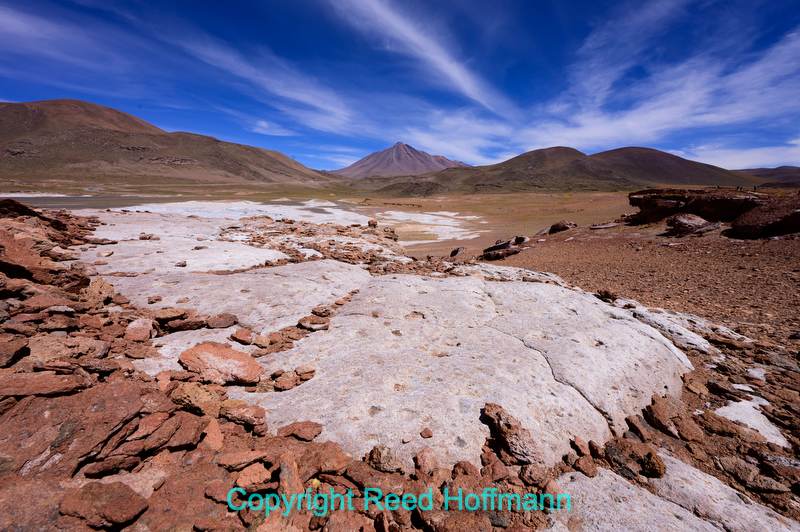
Laguna Chaxa is a lagoon in the midst of the Atacama Salt Flat, at 13,000 feet. The combiantion of cracked lava and salt made for some nice images. Nikon Z 8, Aperture Priority, Sunny white balance, ISO 64, 1/125 at f/14 in Matrix metering, +0.3 EV, Nikkor Z 14-30mm f/4 S lens at 14mm.
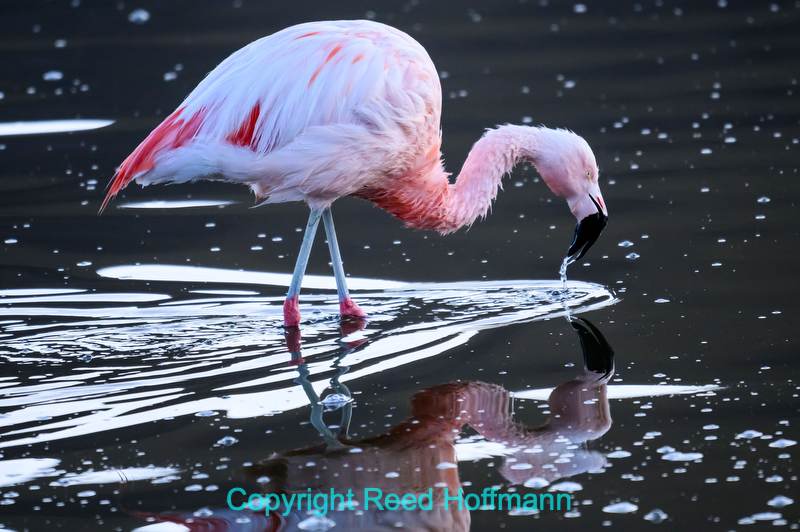
We were all surprised to find flamingos at 13,000 feet, where the temperature was near freezing. Nikon Z 8, Aperture Priority, Sunny white balance, ISO 5600, 1/1250 at f/6.3 in Matrix metering, 0.0 EV, Nikkor Z 180-600mm f/5.6-6.3 VR lens at 600mm.
One of the first things everyone noticed was the altitude. San Pedro sits at 8,000 feet, and most of the places we visited were higher. By the end of those five days, we’d done short hikes at elevations just over 14,000 feet! Our guides had good advice on how to deal with the altitude, and after a little struggle the first two days, everyone managed just fine. Here’s a tip if you decide to go there: spend the first couple of days visiting the “lower” altitude areas and save the higher ones for later. By then you’ll have acclimated enough to be more comfortable.
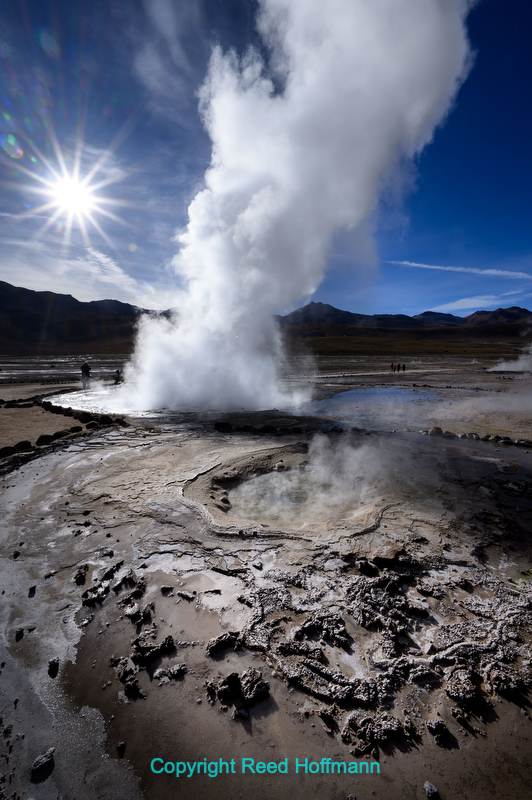
The Tatio Geysers are the highest geyser basin in the world (surprise!). Nikon Z 8, Aperture Priority, Sunny white balance, ISO 100, 1/160 at f/20 in Matrix metering, -0.3 EV, Nikkor Z 14-30mm f/4 S lens at 14mm.
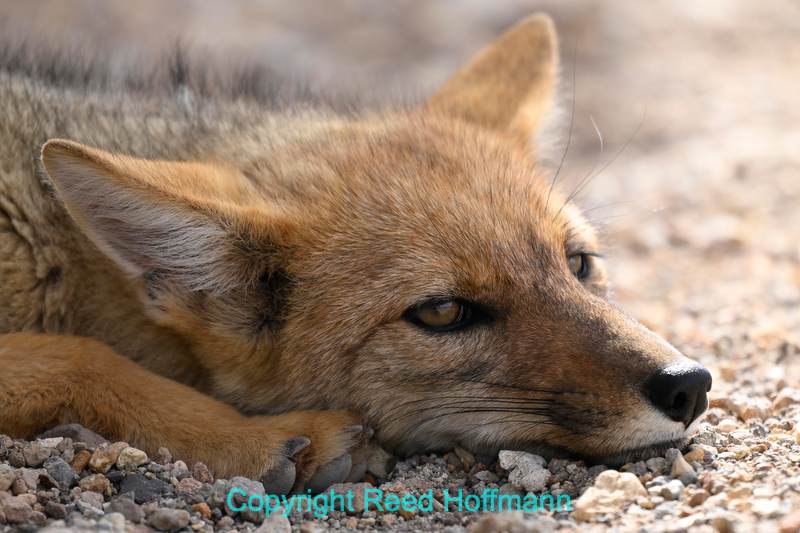
Returning to our vehicles after exploring the geyser basin, we found a fox hanging out near the ranger station. The guides throught people must have been feeding it, as it wasn’t bothered by our presence. Nikon Z 8, Aperture Priority, Sunny white balance,, ISO 400, 1/500 at f/6.3 in Matrix metering, +0.7 EV, Nikkor Z 180-600mm f/5.6-6.3 VR lens at 600mm.
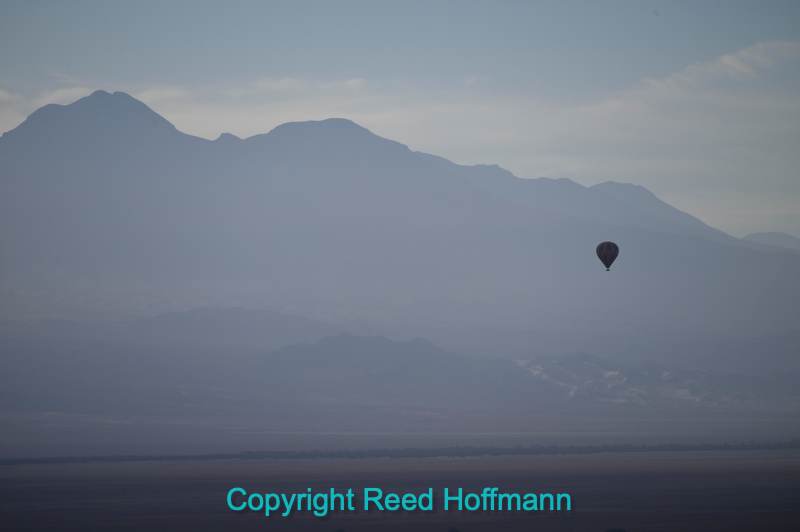
San Pedro being a popular tourist destination (though we didn’t hear many English speakers), on still mornings we saw some balloon lifts. Nikon Z 8, Aperture Priority, Sunny white balance, ISO 250, 1/1000 at f/8 in Matrix metering, 0.0 EV, Nikkor Z 28-400mm f/4-8 VR lens at 360mm.
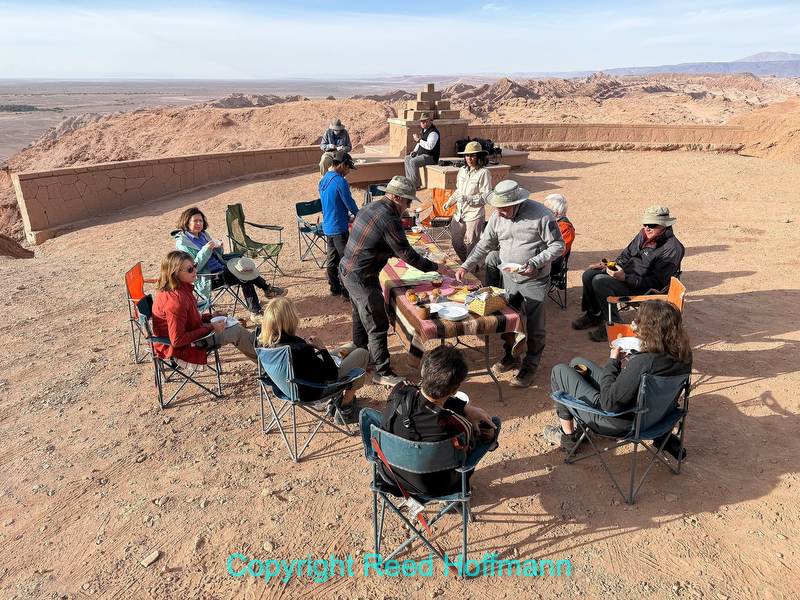
Our guides occasionally served us meals on location, like this breakfast with views of the Cordillera de la Sal (Salt Mountains). iPhone photo.
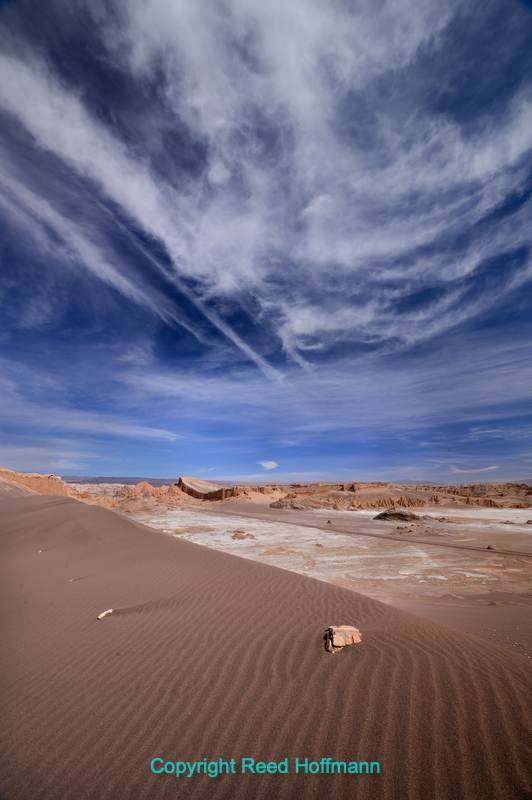
A short hike in Valley of the Moon gave us views like this. Nikon Z 8, Aperture Priority, Sunny white balance, ISO 80, 1/50 at f/16 in Matrix metering, 0.0 EV, Nikkor Z 14-30mm f/4 S lens at 14mm.
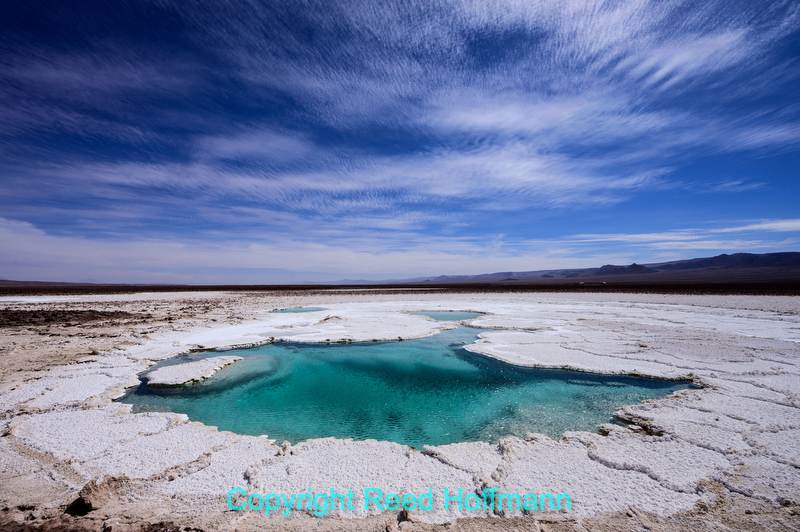
During peak tourist season (a little later than we were there), visitors can bathe (actually just float) in the Baltinache Lagoons. We were happy that people werenÕt yet allowed in them, as that would have spoiled a beautiful scene. Nikon Z 8, Aperture Priority, Sunny white balance, ISO 64, 1/160 at f/14 in Matrix metering, +0.3 EV, Nikkor Z 14-30mm f/4 S lens at 16mm.
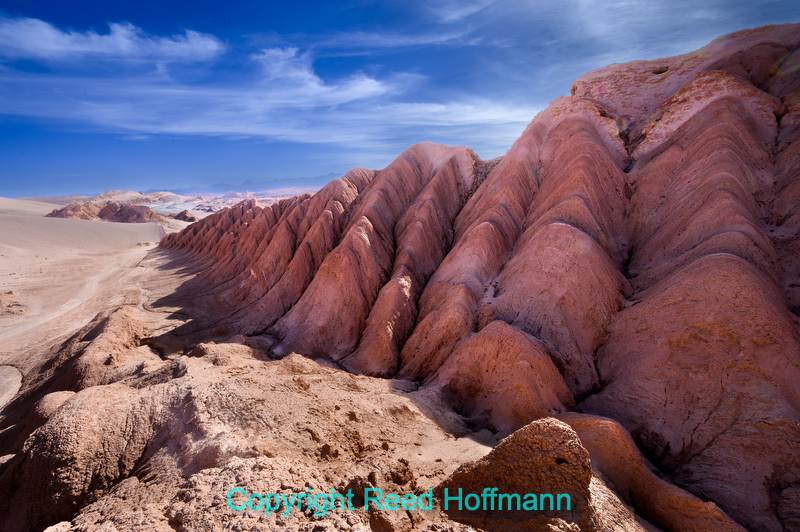
Returning to Valle de Luna (Valley of the Moon) the next morning, we visited some unique rock formations. Nikon Z 8, Aperture Priority, Sunny white balance, ISO 125, 1/125 at f/16 in Matrix metering, -1.0 EV, Nikkor Z 14-30mm f/4 S lens at 14mm.
Finishing the Atacama part of the trip, the guides returned us to Calama for our late afternoon return flight to Santiago. After landing we grabbed our luggage and made the short walk to a hotel across from baggage claim to spend the night. The next morning it was back to the domestic departures area to begin the second half of the trip.
Flying into Punta Arenas, we could see lots of water and land, as it’s situated on the Strait of Magellan. This winding water route allowed early mariners to avoid sailing around Cape Horn at the tip of South America, which is notorious for bad weather. Punta Arenas is also the jumping off point for many of the ships that sail down to Antarctica. For us, it was the jumping off point to get to Torres del Paine National Park, a five-hour drive north. We didn’t arrive at our home for the next five nights, EcoCamp Patagonia, until 9 pm, but being that far south, sunset was still an hour away.
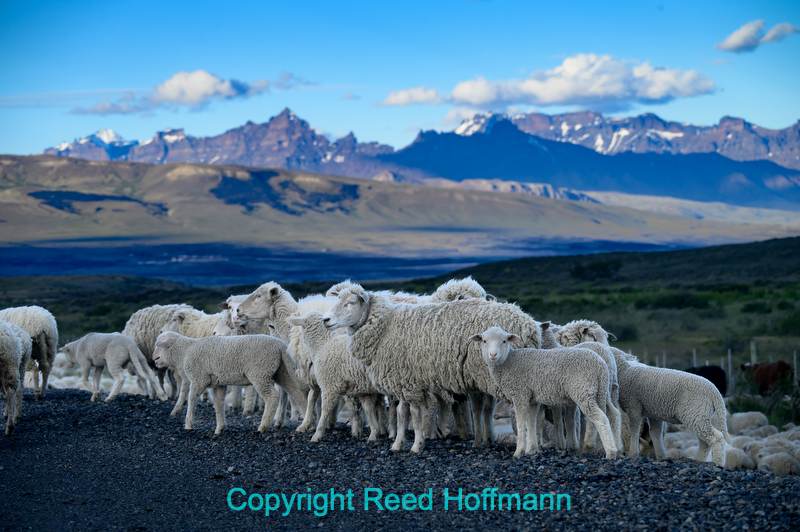
On our drive up to Torre del Paine National Park we ran into a little road congestion… A herd of about a thousand sheep were being driven to their summer grazing areas. Nikon Z 8, Aperture Priority, Sunny white balance, ISO 400, 1/500 at f/8 in Matrix metering, -1.0 EV, Nikkor Z 28-400mm f/4-8 VR lens at 130mm.
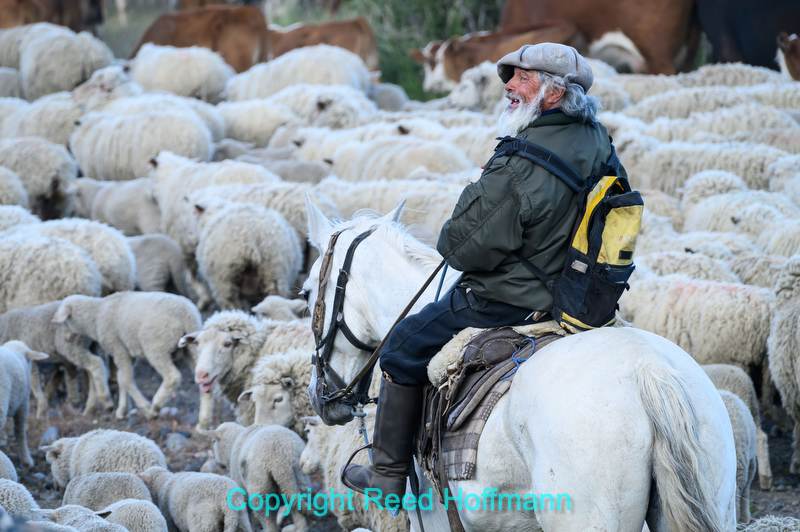
About a half-dozen Chilean gauchos on horseback were overseeing the movement of the sheep to their new pastures. Nikon Z 8, Aperture Priority, Sunny white balance, ISO 640, 1/400 at f/8 in Matrix metering, -0.3 EV, Nikkor Z 28-400mm f/4-8 VR lens at 310mm.
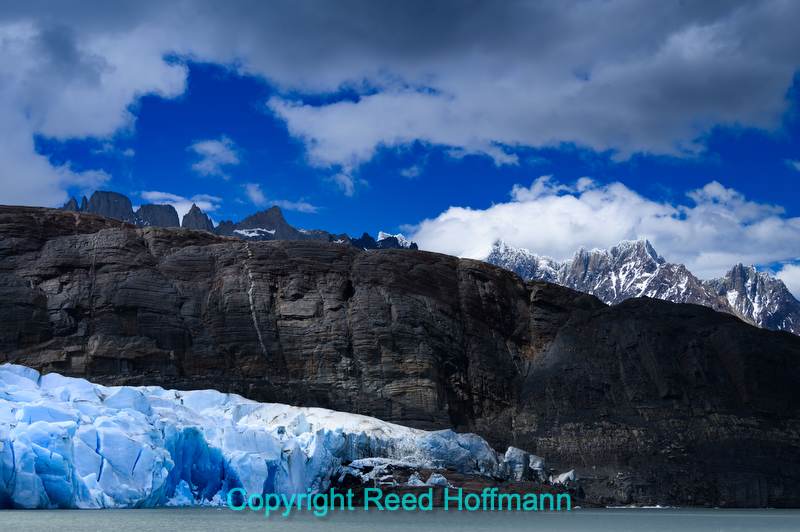
On our fist full day in the national park, we took a boat cruise to Grey Glacier. Nikon Z 8, Aperture Priority, Sunny white balance,, ISO 200, 1/640 at f/10 in Matrix metering, -0.3 EV, Nikkor Z 28-400mm f/4-8 VR lens at 50mm.
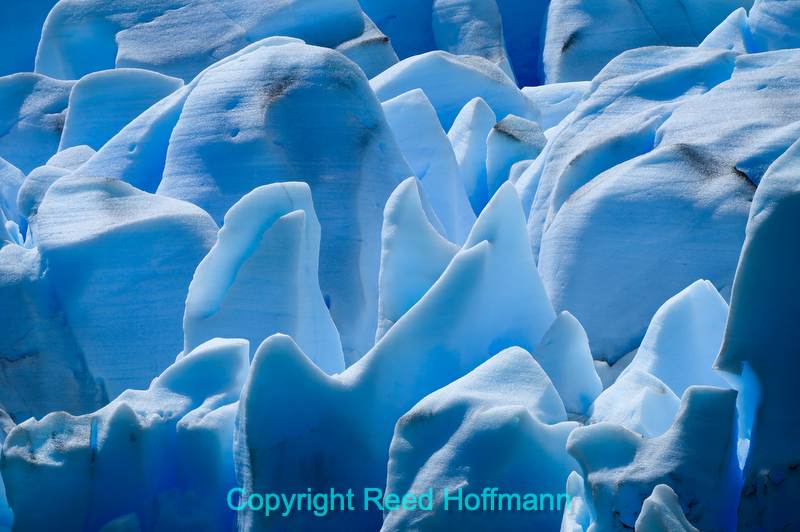
A detail of Grey Glacier. Nikon Z 8, Aperture Priority, Sunny white balance, ISO 200, 1/1600 at f/10 in Matrix metering, +0.3 EV, Nikkor Z 28-400mm f/4-8 VR lens at 290mm.
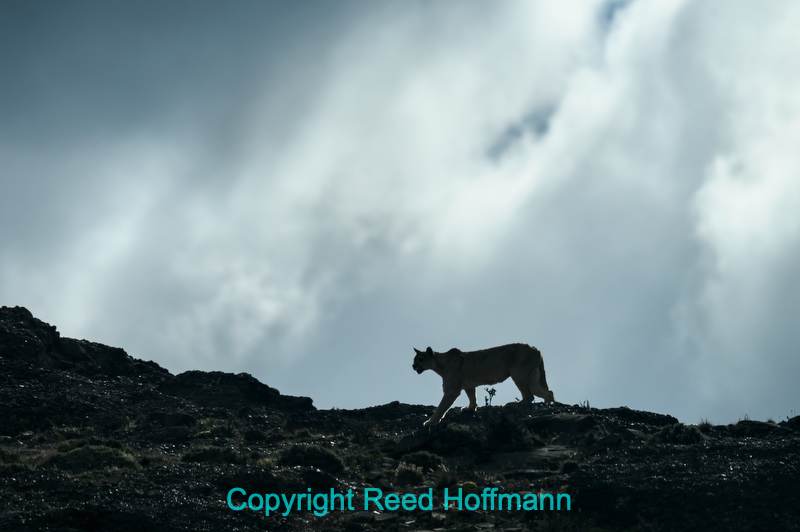
On our way back to EcoCamp that first afternoon, we came across a puma hunting guanacos (yet another relative of the llama). Nikon Z 8, Aperture Priority, Sunny white balance, ISO 200, 1/800 at f/8 in Matrix metering, -0.7 EV, Nikkor Z 180-600mm f/5.6-6.3 VR lens at 600mm.
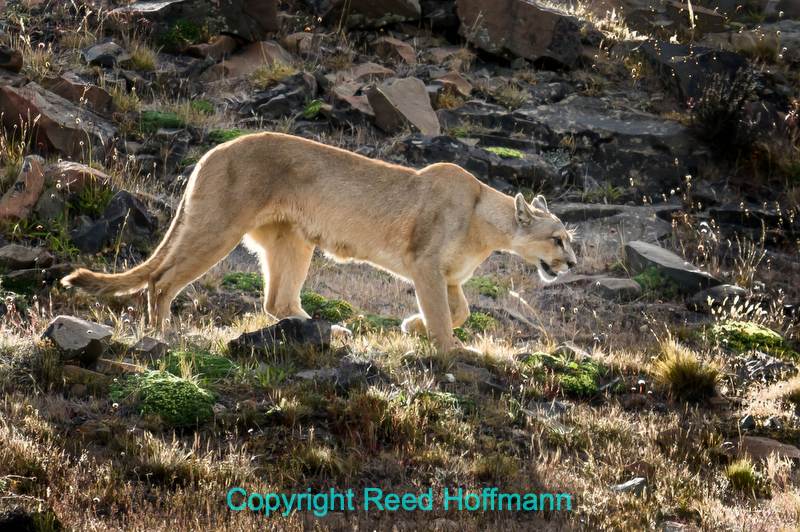
We drove along following the puma as it traversed the slope across from us. After moving ahead some distance, we were able to get out of the vehicle to make some pictures. Nikon Z 8, Aperture Priority, Sunny white balance, ISO 500, 1/1000 at f/6.3 in Matrix metering, 0.0 EV, Nikkor Z 180-600mm f/5.6-6.3 VR lens at 600mm.
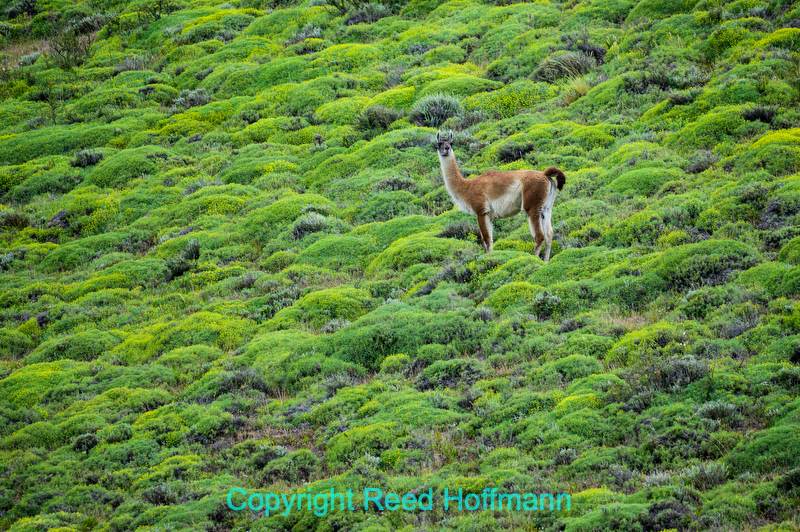
Eventually we found what the puma was heading for, a guanaco. But it too was keeping an eye on the puma. All of that made for quite a first day! Nikon Z 8, Aperture Priority, Sunny white balance, ISO 500, 1/400 at f/7.1 in Matrix metering, 0.0 EV, Nikkor Z 180-600mm f/5.6-6.3 VR lens at 600mm.
What to say about EcoCamp Patagonia? The photos online show small domes in a beautiful location. They don’t do it justice. From the outside the domes look pretty basic, but inside is a different story. We stayed in Suite Domes, which are very nice and have their own bathroom. However, the real stars of the show are the community domes, which house the bar and the dining room. And inside there is where you’re treated to meals you wouldn’t expect at a “camp.” Breakfast was an expansive buffet, and afterwards you assemble your own pack lunch for the day. You could make wraps, sandwiches, salads or just choose from a wide variety of cheeses, meats, fruit, veggies, nuts and breads to pack into a small, reusable metal container. Being eco-friendly, those containers were returned and washed each night for the next day’s adventure. And dinner, starting with a signature cocktail each evening (non-alcoholic or otherwise) consisted of choices of appetizers, main courses and desserts. I’m pretty much an “eat to live” person, just looking for enough food to get me through each day. But if you’re a member of the “live to eat” group, then you’d be very, very happy with the dinners.
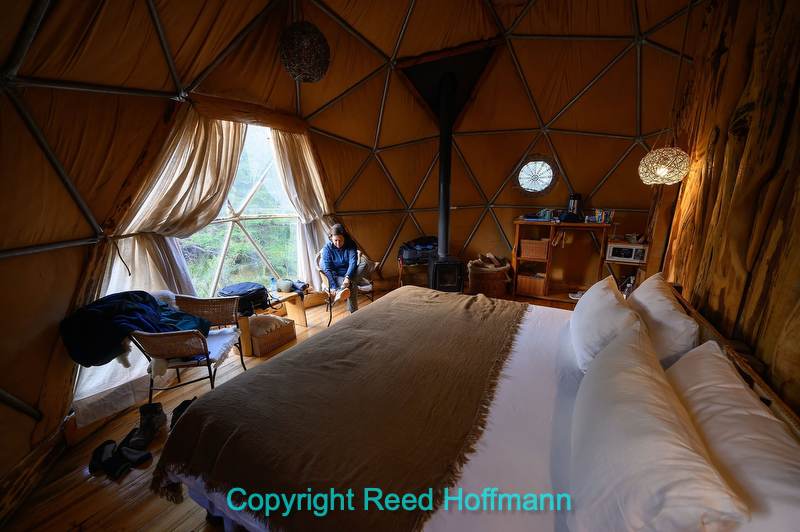
My wife suits up for another day of exploring Torres del Paine National Park, from inside our ÒSuite Dome,Ó which, honestly, was pretty sweet! Nikon Z 8, Aperture Priority, Sunny white balance, ISO 1000, 1/80 at f/4.5 in Matrix metering, -0.7 EV, Nikkor Z 14-30mm f/4 S lens at 14mm.
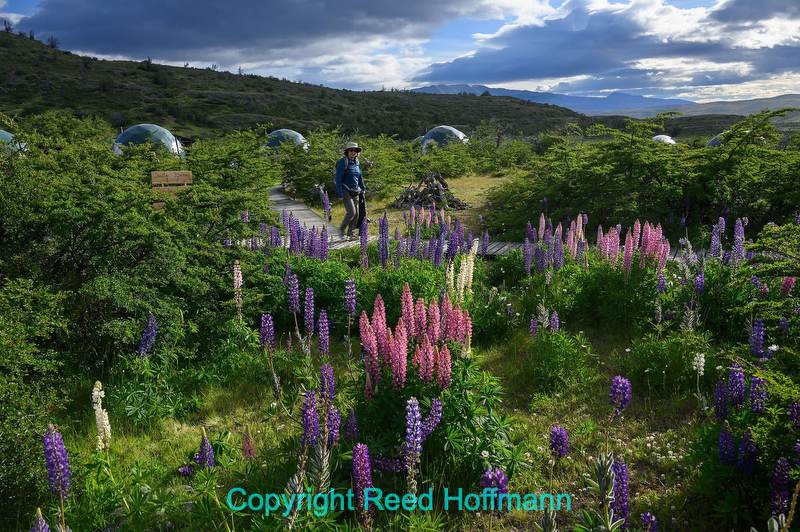
Columbines added much color to the grounds of EcoCamp. TheyÕre not native to that part of Chile, but found in many places. Nikon Z 8, Aperture Priority, Sunny white balance, ISO 64, 1/50 at f/11 in Matrix metering, -0.7 EV, Nikkor Z 28-400mm f/4-8 VR lens at 28mm.

Fancy schmancy! A tuna appetizer to start dinner. iPhone photo.
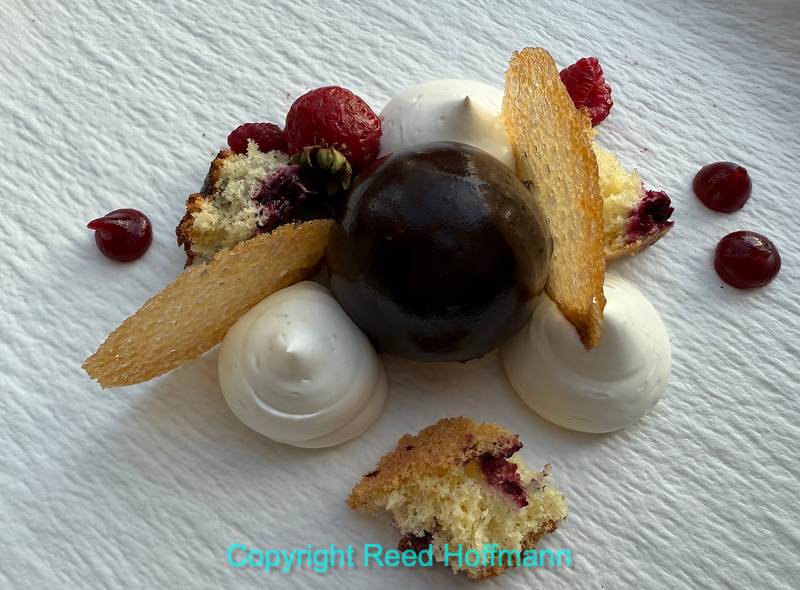
And one of the desserts to end with. iPhone photo.
Like the desert, the mountains also offer a wide range of activities. We took a boat to view glaciers, hiked to see cave paintings, followed a puma on the hunt for guanacos (another llama cousin), visited a marsh to look for birds, tracked a herd of wild horses and were regularly stunned by the amazing mountain vistas. While Patagonia is famous for its inhospitable weather, we were lucky to encounter only the occasional high winds and otherwise experienced beautiful sunny weather.
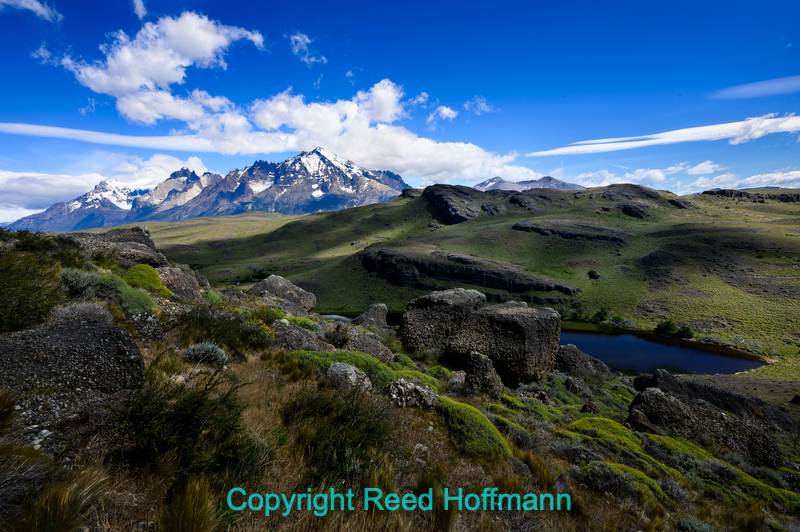
One of the many spectacular views we had during our time in Patagonia. Nikon Z 8, Aperture Priority, Sunny white balance, ISO 64, 1/80 at f/16 in Matrix metering, -1.0 EV, Nikkor Z 14-30mm f/4 S lens at 16mm.
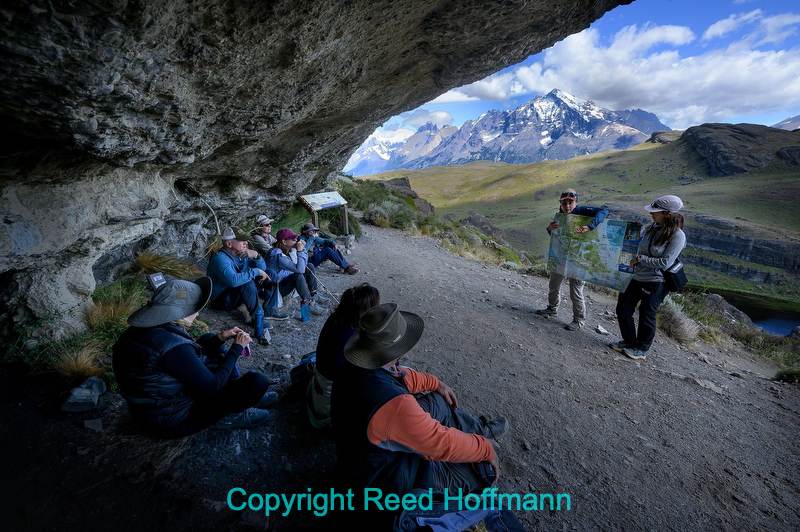
Francisca and Paula give us a brief history of the area and its early inhabitants as we take a break for a snack during the hike to see some cave paintings. They were our guides in Patagonia, and excellent. Nikon Z 8, Aperture Priority, Sunny white balance, ISO 200, 1/200 at f/11 in Matrix metering, -1.7 EV, Nikkor Z 14-30mm f/4 S lens at 15mm.
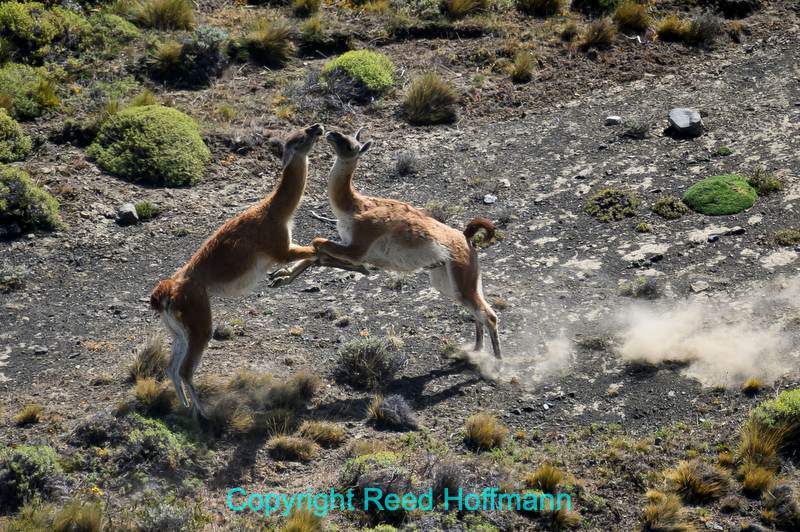
After the history lesson, we heard what sounded like screams coming from the valley below. It turned out to be two male guanacos fighting. Nikon Z 8, Aperture Priority, Sunny white balance, ISO 320, 1/1250 at f/6.3 in Matrix metering, -0.3 EV, Nikkor Z 180-600mm f/5.6-6.3 VR lens at 600mm.
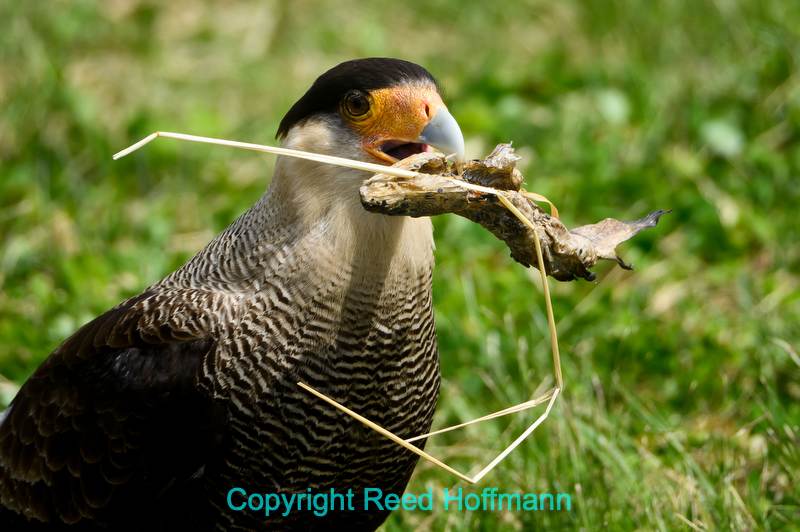
Another day we found a northern crested caracara bird gathering nest material near where we had stopped for our picnic lunch. Nikon Z 8, Aperture Priority, Sunny white balance, ISO 500, 1/1250 at f/8 in Matrix metering, 0.0 EV, Nikkor Z 28-400mm f/4-8 VR lens at 400mm.
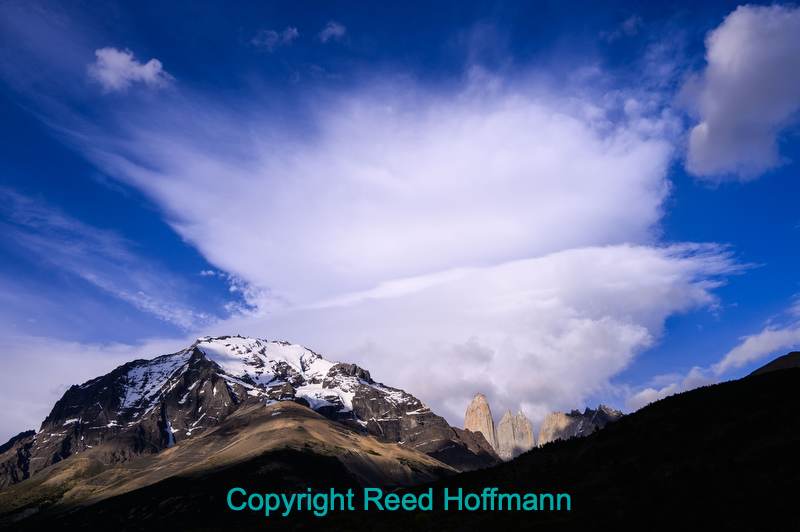
There were many jaw-dropping views in Patagonia, and this was right behind where we were staying. Nikon Z 8, Aperture Priority, Sunny white balance, 5210K, ISO 64, 1/500 at f/8 in Matrix metering, -0.3 EV, Nikkor Z 28-400mm f/4-8 VR lens at 31mm.
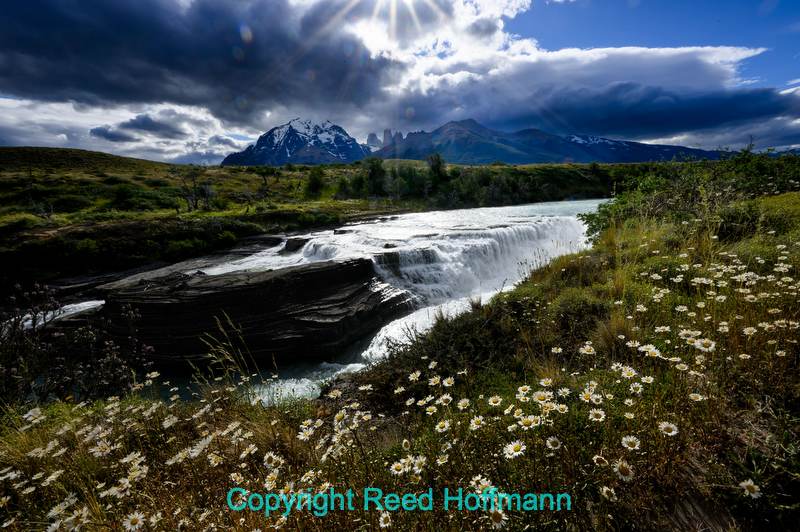
The last photo stop we made during the trip was at Cascada Rio Paine, a great way to end our time in Patagonia. Nikon Z 8, Aperture Priority, Sunny white balance, ISO 64, 1/50 at f/22 in Matrix metering, -0.7 EV, Nikkor Z 14-30mm f/4 S lens at 14mm.
All in all, it was a fantastic trip. The only real challenges we experienced were the altitude in the desert and having to make multiple in-country flights (airports – ugh). Our guides were great, the accommodations good to excellent and the photo opportunities endless. This may have been my first time leading a trip to Chile, but it won’t be my last.
– Want to see more? The entire gallery from this trip can be found here –
(If you like this story, please share it with your friends and let them know about the links on photography that I post on my business Facebook page. I’m also on Instagram and Twitter, @reedhoffmann. And if you’re curious about the workshops I teach, you can find them here. And, you can subscribe to this blog on my home page.)

